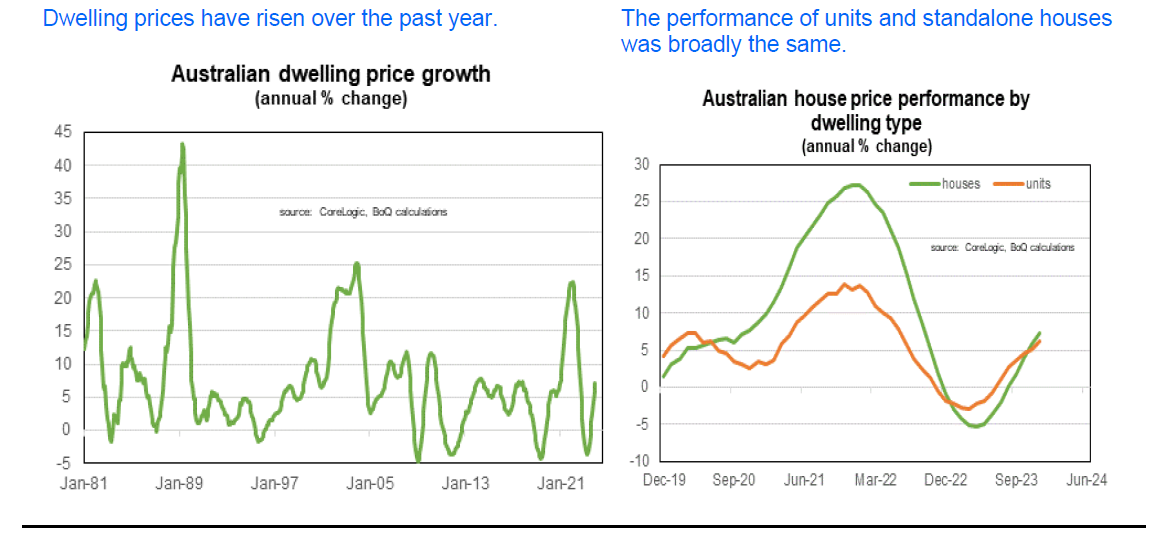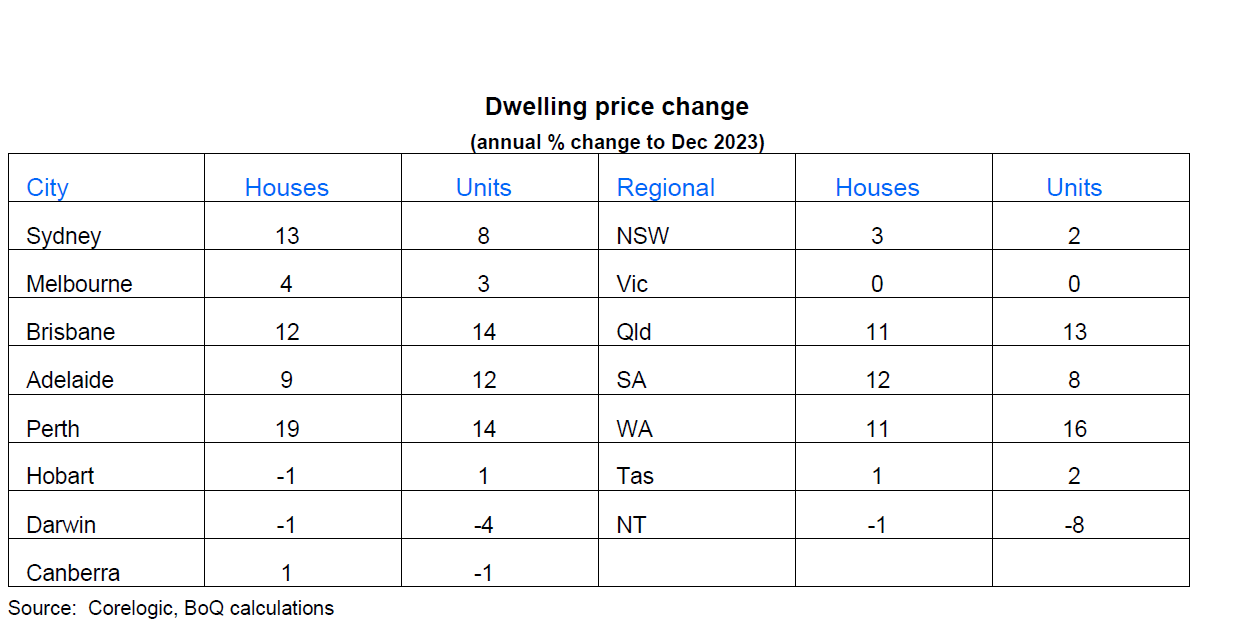And reveals outlook for 2024

In Bank of Queensland’s latest Housing Market Update, Peter Munckton, BOQ chief economist, has reported a robust rebound in Australian house prices in 2023, and has also revealed house price forecasts for 2024 and 2025.
Price growth defies expectations in 2023
Contrary to analysts’ predictions, the annual growth rate hit approximately 7%, with the resurgence consistent across both houses and units. This marked a departure from the trends observed in the preceding years, where standalone houses outperformed units in 2020 and 2021, only to lag behind in 2022.

House price performance varied among market segments, with strong growth observed in the Queensland, South, and Western Australian housing markets. Sydney experienced robust growth, while regional New South Wales saw less significant increases. Melbourne’s price growth was modest, and regional Victoria noted negligible changes. The Tasmanian, Northern Territory, and Canberra markets exhibited softer conditions.

Regional variances and long-term trends
Regional disparities in dwelling price performance can endure over extended periods.
Over the past five years, cities like Melbourne, Perth, and Darwin underperformed, while Sydney and Hobart excelled over the decade. According to Munckton, the variations stemmed from economic dynamics and valuation disparities.
However, over a 20-year horizon, the differences between capital cities have been relatively modest, with Hobart emerging as the consistent frontrunner, reflecting the broad impact of fiscal and monetary policies.
“Inter-state population movements are driven by performance of regional jobs markets and differences in housing affordability,” Munckton (pictured above) said. “The result is that over a long period these factors have tended to even up house price outcomes.”
Consistent performance and 40-year trends
The relatively consistent performance of house prices across capital cities has been a hallmark of the past 40 years, BOQ reported.
Sydney’s proportionate difference from other capital city prices has cycled around a stable average, reflecting shifts in regional economic factors and housing valuations. Perth and Darwin, being geographically distant from the East Coast, exhibited distinct market behavior due to the mining industry’s influence.
Local dynamics
Over shorter periods, significant price variations can occur between different housing regions, with affordability, remote work trends, and commuting costs influence these fluctuations, Munckton said.
Sydney’s topography, surrounded by water and mountains, contributed to less divergence between inner and outer regional Local Government Areas (LGAs). The shift to remote work and affordability concerns could potentially sustain outperformance by Sydney’s outer regional LGAs.
2024 and 2025 House price forecasts
Average house price growth across Australia is anticipated to be lower in 2024 compared to 2023. Constrained household disposable income growth, weakened job markets, and a delayed forecast for interest rate reductions contributed to this outlook.
However, stronger house price growth is expected in 2025 as interest rates decrease, and the economic outlook improves.
Standalone house prices are predicted to see the most significant rise in Melbourne and Perth in 2024, reflecting their current value propositions, while Sydney is expected to underperform due to elevated pricing. Adelaide and Brisbane are likely to exhibit more average price movements, with softer markets like Hobart, Canberra, and Darwin expected to fare relatively better in 2024.
Get the hottest and freshest mortgage news delivered right into your inbox. Subscribe now to our FREE daily newsletter.



